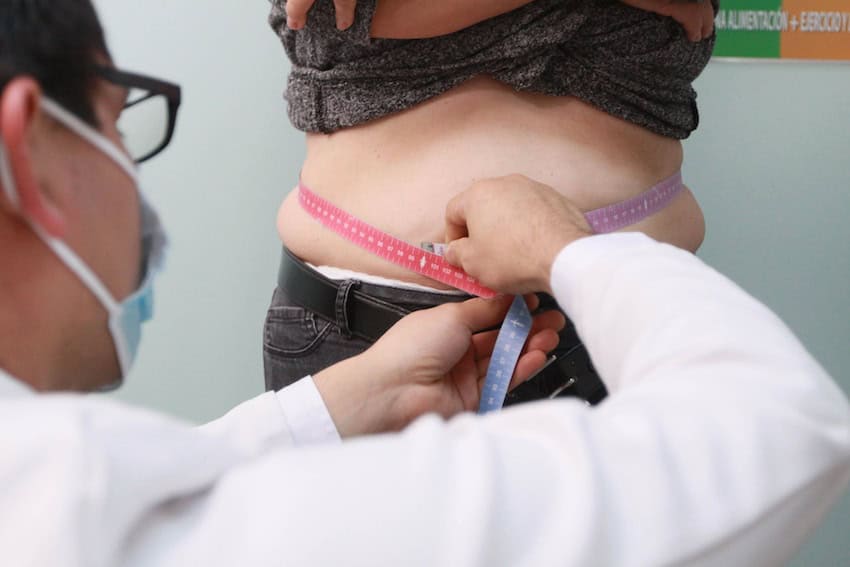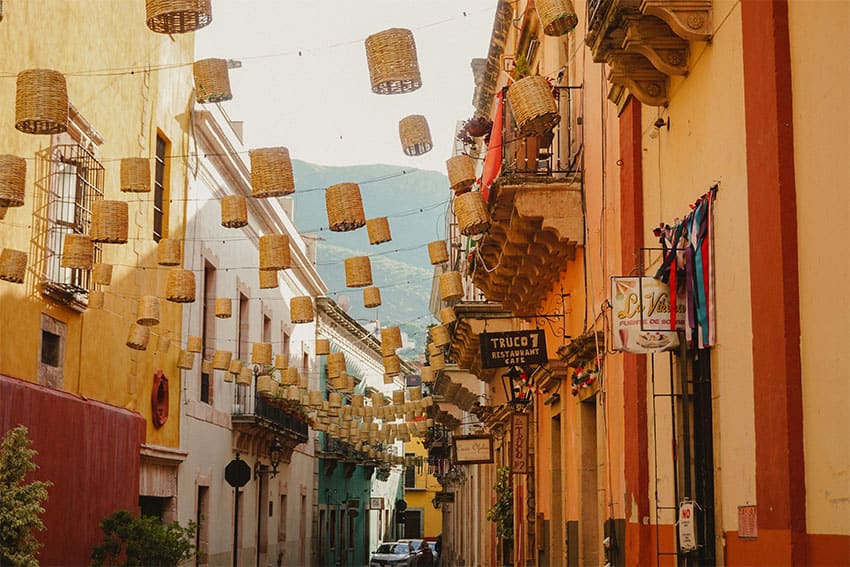Like many American women, I spent decades struggling with body image, and an equal amount of time getting angry at myself for caring so much. Moving abroad changed all that, as the concept of body image in Mexico is unlike the one that I left behind.
Body image refers to how an individual sees and feels about their body. In my case, I worried about my weight. While it fluctuated over a twenty-pound range, my body image — even when I was at my thinnest — caused me much more stress and anxiety than my actual weight ever did.

Strong body confidence
But 18 years ago, my husband Barry and I bought a house in Guanajuato. We knew we would love the town, already seduced by its pedestrianized, vibrant streets and the Cubist houses piled on top of each other, the color of mango, watermelon, lemon and kiwi. But I never dreamed that living here would change my attitude toward my body — for the better.
It didn’t take me long to notice that Mexican women seemed to feel good about their bodies. Even if they were on the llenita (plump) side, they exposed their midriffs with pride. Indeed, a 2015 survey showed that Mexico was the most body-confident country in the world, with almost a third of its population feeling completely satisfied with the way they looked, and almost half were fairly satisfied.
Fitness baked into my life
Before we bought our Mexican home, I was reasonably fit, but exercise and physical activity were not woven into my everyday life the way they are now. My fitness is no longer an extraneous aspect of my life that comes and goes.
We don’t have a car in Guanajuato — and don’t want one. Unless you live in the suburbs, having a car is a pain, because the houses are adjoining, row house-style constructions with neither garages nor driveways, and keeping a car in a commercial parking lot is expensive. And without a car, we walk everywhere. There’s nothing like doing errands on foot at almost seven thousand feet, not to mention climbing the steep steps built into Guanajuato’s hills, to create a bank deposit of fitness. One of my favorite morning circuits is a loop of about 45 minutes, which involves climbing a steep and colorful street for about 15 minutes, walking level for another 15 minutes, and then downhill back home.

Another weekly activity I build into my routine is shopping at La Comer, the gourmet supermarket about twenty minutes from our home. I know I’ll come back laden with goods. “Why not take a cab?” Barry says. But why? Taxis can get stuck in traffic. I just take a backpack.
We also hike. We can close the door to our home and be hiking in the hills above town in ten minutes without ever getting in a car or a bus. The fact that I can be out of Guanajuato’s dense urban environment so quickly is one of the main draws of the city.
Strong role models
Much as I appreciate that fitness has become an organic part of my life, it’s not the only aspect of life in Mexico that has affected my body image. Everywhere I look, I see Mexicans at work: street cleaners sweeping the sidewalks and picking up trash, and construction workers, gas and water deliverers carrying heavy loads of bricks, gas canisters and 5-gallon plastic water containers on their shoulders. In the U.S., I don’t notice physical labor the way I do in Mexico. Seeing people working hard reminds me that the body is designed not to look a certain way, but to get things done.
In particular, I’m in awe of our house cleaner, Vero, a street-savvy woman in her late fifties who lives in the country and takes three buses into town. She cleans houses and tends gardens six days a week, and cooks and cleans at home on Sundays. I admire her resilience and the way she steps up to any task. A woman of deep faith, she walks for almost 24 hours to a pilgrimage site once a year. She’s much tougher than I am.

Seeing people work so hard humbles me and reminds me that the body is much more than appearance. Sure, I want to look reasonably attractive, but it’s more important to me to be physically competent. Every day, seeing Mexicans work hard puts any lingering anxieties about my body in perspective.
It’s OK to age
In Guanajuato, I see people of all ages out and about. The other day, as I watched an elderly gentleman walking cautiously down the street with a cane, I realized that people who look old are visible in Mexico, whereas in the U.S. I rarely see them. Where are they? I guess they’re at home, in an assisted-living facility or a vehicle being driven to appointments. Wherever they are, they’re hidden, certainly not in public.
Seeing elderly Mexicans out and about, navigating their lives in the public arena, leaves me with the message that aging is normal. In Mexico, nothing is embarrassing or shameful about getting older, and this makes me feel better about my aging process.
Almost twenty years after buying our home, Mexico brings me even more joy than I expected: music, cuisine, Spanish, friendly people, history and art. Today I’m not only enjoying all that Mexico has to offer, but most importantly, I’m happier with myself. And that is the biggest surprise of all.
Louisa Rogers and her husband Barry Evans divide their lives between Guanajuato and Eureka, on California’s North Coast. Louisa writes articles and essays about expat life, Mexico, travel, physical and psychological health, retirement and spirituality. Her recent articles are on her website, https://authory.com/LouisaRogers
